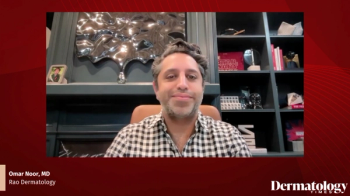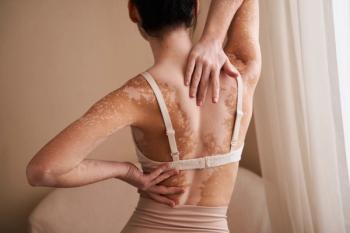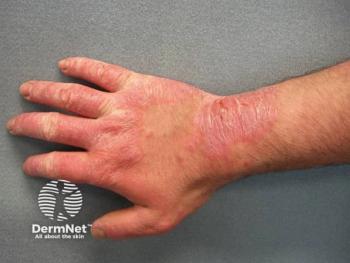
Are Schools Failing Children with Chronic Health Conditions?
Key Takeaways
- Chronic dermatological conditions affect children's school attendance, academic performance, and social integration, leading to emotional distress and self-consciousness.
- Parents play a crucial advocacy role, often facing challenges in securing necessary school accommodations for their children with long-term conditions.
Parents advocate for children with chronic skin conditions, highlighting school challenges and the need for better support in pediatric dermatology.
Chronic dermatological conditions, such as severe atopic dermatitis or psoriasis, are long-term physical health conditions (LTCs) that affect a significant portion of the pediatric population. These conditions often extend beyond the physical discomfort of the skin, impacting a child's school attendance, academic performance, and social integration.1,2 The symptoms, which can include visible skin lesions, intense itching, and chronic pain, can lead to emotional distress, self-consciousness, and a feeling of being different from their peers. While previous research has explored the firsthand accounts of children and young people (CYP) with LTCs, there has been a notable absence of research from the perspective of parents. These parents often serve as crucial advocates, translating complex medical needs for a non-medical school environment. A recent qualitative study investigated the parental perspective on what secondary school-aged CYP with LTCs need at school, with particular relevance to families managing chronic skin conditions.3
Methods
The study utilized a pragmatic, cross-sectional design, employing qualitative interviews with 27 parents of CYP aged 11-18 years in the UK. The research included families of children with various LTCs, including conditions like severe allergies and chronic pain. The data was gathered through participant-led interviews and a subsequent co-analysis workshop where a subset of parents collaborated with researchers to interpret the findings. The analysis was structured around 6 key needs previously identified by children with LTCs, serving as a framework to understand and categorize the parental experiences. This methodology ensured the findings were grounded in the lived reality of families navigating both the medical and educational systems.
Results
The study confirmed the 6 needs previously identified by the CYP themselves, and from a dermatological standpoint, these are highly relevant. These needs included: (1) safely managing their health at school, which for a child with a severe skin condition might involve access to a private space for applying topical treatments or managing a flare-up; (2) having a flexible education pathway to accommodate appointments with dermatologists or time off during severe flare-ups; and (3) being acknowledged and listened to by teachers and staff who understand the burden of their condition. The research further highlighted the need for (4) inclusion within the school community, where the visible nature of skin conditions often leads to bullying or social exclusion; (5) building towards the future, which is often compromised by missed schooling; and (6) developing coping mechanisms for the emotional and mental health challenges associated with living with a visible and often misunderstood condition.
Parents consistently reported having to act as forceful advocates for their children. They frequently described a "battle" to secure reasonable adjustments from schools, such as the need for a comfortable uniform or a flexible PE curriculum to manage itching and discomfort. This parental advocacy often had a negative impact on the home-school relationship and on the parents' own well-being. The study also revealed that parents frequently had to compensate for a lack of school support by arranging and paying for private tuition to help their children catch up on missed classwork.
A significant finding was the consistent lack of awareness among both school staff and parents regarding existing guidance, such as Individual Health Plans, which are crucial for managing conditions like severe eczema or psoriasis in a school setting. The study concluded that the reliance on parental advocacy to navigate these systems exacerbates health inequalities, as not all families have the resources or ability to perform this demanding role. This is particularly salient in dermatology, where visible conditions can create additional stigma and a greater need for specific, informed support.
Conclusion
This research provides a critical and much-needed parental perspective on the challenges faced by children with LTCs, offering valuable insights for the dermatological community. It underscores the unmet needs of CYP with chronic skin conditions and the significant, often stressful, role that parents must assume to ensure their child's well-being and educational success. The study highlights the urgent need for a more structured and supportive approach within the education system. Recommendations include establishing a designated school contact person who is knowledgeable about medical conditions and improving the dissemination of information about the rights and needs of CYP with chronic dermatological conditions. By addressing these systemic shortcomings, healthcare providers and schools can better support these families and work towards a more equitable and inclusive educational environment.
References
- Forrest CB, Bevans KB, Riley AW, Crespo R, Louis TA. Health and school outcomes during children's transition into adolescence. J Adolesc Health. 2013;52(2):186-194. doi:10.1016/j.jadohealth.2012.06.019
- Cheng BT, Silverberg JI. Association of pediatric atopic dermatitis and psoriasis with school absenteeism and parental work absenteeism: A cross-sectional United States population-based study. J Am Acad Dermatol. 2021;85(4):885-892. doi:10.1016/j.jaad.2021.02.069
- Hopwood V, Pini S, Roker M. Parents of children and young people with long-term physical health conditions-experiences of navigating school. Child Care Health Dev. 2025;51(5):e70132. doi:10.1111/cch.70132
Newsletter
Like what you’re reading? Subscribe to Dermatology Times for weekly updates on therapies, innovations, and real-world practice tips.



















